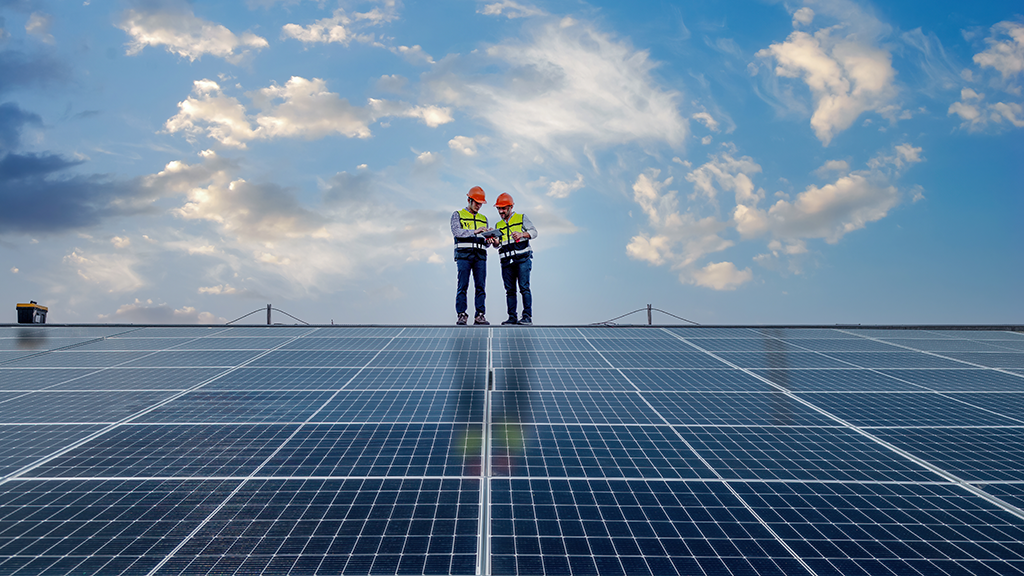The future of the current energy transition that is underway will depend on how successfully renewables can phase out fossil fuels. It is estimated the use of renewable energy in the transportation, heating, and power sectors will rise by almost 60% between 2024 and 2030, with solar power contributing a significant share. The number of solar power users is growing as the cost of solar panels decreases annually. Research from Ember predicts that 593 GWs of solar panels will be installed globally in this current year, 2024, a +29% increase from 2023.
Today, rooftop solar photovoltaic (PV) technology is commonly used to generate power for residential and industrial customers. There is a two-way benefit. The electricity produced can be used locally by homes and factories or diverted into regional electrical systems.
China
China is the world’s largest solar energy generator, with some of the biggest photovoltaic installations ever constructed. However, smaller-scale solar projects have become China’s primary focus in recent years as photovoltaic technology continues to advance. China’s Shandong province is at the forefront of the nation’s solar development, with 18% of total installed rooftop capacity, yielding 33 gigawatts (GWs) and serving 18 million homes.
To encourage rooftop solar installation and boost domestic renewable energy production, the Chinese government launched its Whole County PV program in 2021. Currently, 31 provinces and 676 counties have joined. The goal of this initiative is for counties to install rooftop photovoltaic systems on at least 50% of government buildings, 40% of public buildings, 30% of commercial structures, and 20% of rural residences. The aim is to reduce electricity costs and support China’s commitment to becoming carbon neutral by 2060.
Middle East
At the end of 2023, 93% of the power generated in the Middle East was derived from fossil fuels. Nuclear and hydro each contributed 2%, while renewables made up only 3%. The region has one of the fastest-growing populations in the world, with a resident count increase of more than 60% since 2000, climbing to 280 million this year. The demand for power has rapidly increased, doubling during the last 20 years, and is expected to follow a similar trend going forward.
According to Rystad Energy, renewable energy sources will surpass fossil fuels in the Middle East by 2040. Solar photovoltaic technology is predicted to make up over 50% of the region’s power supply. By the end of 2024, the Middle East’s total solar capacity will reach 23 GWs.
To reach this goal, the region is installing advanced solar technology, such as bifacial solar panels, which collect sunlight from both sides. The market for rooftop solar PV modules in the Middle East was estimated to be worth USD 857 million in 2023 and is projected to expand at a compound annual growth rate (CAGR) of +7% from 2024 to 2032. Also, battery energy systems will support grid stabilization by storing extra solar energy for use at night or during periods of high demand. To ensure a steady and dependable power supply, hybrid solar projects, which combine solar PV with storage and other renewable energy sources, are gaining more traction.
By the end of the decade, Saudi Arabia, the United Arab Emirates, Oman, and Israel will account for about two-thirds of the region’s total solar capacity. To meet its target of 50% electricity generation from renewables by 2030, Saudi Arabia is aiming for 58 GWs of solar power.
United States
U.S. solar power is expected to grow by 31% in 2025, becoming a key driver in the nation’s electricity expansion. Tesla’s solar technology will play a major role. The company manufactures monocrystalline panels with an energy output of 420 watts; plus, various other solar products for residential use, including solar shingles, inverters, and solar batteries. Tesla’s Powerwall battery can store both solar power from rooftop panels and energy generated by the grid.
In the U.S., during the first half of 2024, installed residential capacity increased in just seven states. Notably, Texas is seeing the most significant growth in solar generating capacity and related battery storage. The Solar Energy Industries Association (SEIA) predicts residential solar generation may expand by double digit annual growth for years to come. There is, however, likely to be reduced government support for renewable power over the next four years.
Residential solar power is crucial to facilitating a substantial move away from fossil fuels. The drop in the price of solar panels, innovation, and mostly positive regulations globally are aiding the spread of solar power systems. However, progress may be slowed by the remaining market’s reliance on fossil fuels and, in some cases, less than fully supportive government policies.



Recent Comments
comments for this post are closed